The content of the article
Residents of harsh climatic zones are recommended to grow apricots from seeds. Choose Far Eastern or Siberian varieties resistant to frost. Far Eastern and Asian species are poorly adapted to subzero temperatures. This method ensures that only the strongest and most healthy seedlings remain, which in 3-4 years will become young trees, throw out the first flowers and delight with delicious apricots.
Bone preparation
Planting material is extracted from large ripe fruits without wormholes and damage:
- Buy 0.5-1 kg of bright yellow or orange fruits on the market, select the softest and juiciest-looking ones, put in a separate plate.
- Put a container with apricots on a windowsill or table for 2-3 days.
- Separate the seeds from the sweet slices. Eat pulp or make jam out of it.
The apricot harvest is immediately planted in the ground or dried and left until autumn or spring. In the first version, it is not necessary to wash away the remaining pulp and juice from planting material. In the second, the bones are rinsed under the tap, laid out on a paper towel and wait for all the liquid to drain. The workpiece is dried on a lighted window sill or in an oven at a minimum temperature, packed in bags or kulechki from a newspaper and put into a box.
Natural stratification
In mid-October or November, but before the onset of the first frost, the bones are pulled out and checked for suitability. Throw into a bowl of water: planting material that has sunk to the bottom is suitable. Residues that have surfaced are thrown away.
Apricot preparations are not processed in any way. The dense shell protects the seed from disease, and no chemicals will scare away rodents and other pests that want to eat the core. Bones are buried in pre-prepared beds, without watering, sprinkled with a thick layer of earth, and left.
What should be the depth of the trench for apricot? Approximately on the bayonet of a shovel, at least 5-6 cm. Fertilizers are put on the bottom of the pit:
- calcined coarse sand;
- a layer of black soil or sod soil;
- rotted grass;
- humus.
Wood ash is also added, which disinfects the soil, destroying bugs and diseases, and feeds apricot kernels. Planting material is placed at a distance. First sprinkled with grass or straw with humus to protect against severe frosts. And then they add loose earth. The soil is not compacted, you can cover the area with future apricots with dry branches.
A plot with seedlings is recommended to be fenced in the fall or to mark in a different way a piece of land on which plants should appear. It will be easier to find hatching shoots and distinguish them from weeds and other trees.
Part of the planting material will be eaten by pests, the second will die from the cold, and the remaining workpieces hardened by low temperatures will sprout in the spring, closer to the beginning or end of May.
The area where young apricots are located is regularly weeded and periodically watered if the land dries too much. There is no need to create a swamp around the seedlings, in which diseases and fungi will multiply.
The first year the trees will spend in the trench in which the seeds sprouted. You cannot transfer immature seedlings to a new place.
So that young apricots get stronger before winter and successfully tolerate low temperatures, in the summer it is recommended to pinch their crown. First, the apex, when it reaches a height of 20–25 cm, and then the lateral shoots. In the fall, too thick trees are thinned out, removing thin and deformed branches.Sections must be lubricated with garden varnish so that they are quicker to heal.
Trees that survived the winter are planted in spring. Apricots are not recommended to be transferred any more. It is important to choose a well-lit area, because the plant develops better in the sun.
Piece hardening
Didn’t succeed in planting seeds in the fall? Then it will be necessary to stratify them artificially in January or February, and in the spring put in pots of earth and wait until the apricot shoots hatch.
You will need:
- water;
- peroxide;
- yogurt jars or plastic cups;
- sand or any kind of land.
The last component is preferably steamed or calcined in the oven to disinfect.
Separate good bones from empty shells using a basin of water. You can do a check by splitting several blanks. Try the apricot kernel: if sweet, it will make a strong and healthy sprout. Bitter advise throwing. They are not mature enough, so the tree from such planting material turns out to be painful, and the fruits themselves are small and sour.
Pour dried bones for 1-2 hours with a solution of water and peroxide. The additive will disinfect planting material and prevent the appearance of fungus. Replace the solution with filtered water at room temperature. Soak the planting material for 2 days, then remove and put in a container with drainage holes filled with wet sand or soil. Plastic cups are suitable, in which several small holes are punched, and a layer of small gravel is laid on the bottom.
Cover jars with apricot kernels with a bag and put in a refrigerator or freezer. Periodically check the workpiece, and if mold appears on the bones, they should be washed with a solution of peroxide.
Stratification of planting material begins in January, and closer to the end of March - mid-April, the hard shell splits into two halves, and thin roots appear. Not the entire harvest sprouts, but only a small part.
Place the kernel with the shell in yogurt or ryazhenka cups filled with a nutritious mixture. It is made from turf land, wood ash and humus. You can put peat, because apricots love acidified soils.
Improvised pots with seedlings are covered with a film or plastic lid, put in heat. Periodically moisten the soil from the spray, but the plant does not need a lot of water.
In May, when the last frosts pass, and the earth warms up enough, apricots are taken out to the garden. Transplanted into separate holes or one trench, in which nutrients are added in advance. Weak sprouts are covered from the wind with cylinders from a five-liter bottle. The bottom is trimmed, the top can be left, just make a lot of large holes in it for good ventilation.
Young apricots are looked after:
- pinch;
- protect from insects;
- form a crown;
- watered with cool water.
Autumn covers the root system and the trunk itself, so that the tree does not freeze in winter. In the spring they transfer to another hole, which will become its permanent home.
Replanting young trees
Apricots, which are about 2 years old, are transferred to a new place. A warm and well-lit area, protected from gusts of wind, is suitable. Pits 60–70 cm deep are dug in the ground, keeping a distance of 4–5 m between them. If you plant the trees closer, their root system will intertwine in a few years, and neighboring plants will clog each other.
Fill the bottom of the pit with a layer of small gravel, on top of which a mixture of fertilizers is laid:
- nitrate;
- humus;
- wood ash;
- mineral additives.
The components are connected to the ground from the pit, mixed thoroughly and filled back. After winter, a depression of approximately 65–70 cm is made in the prepared soil. 2 days before planting, the soil is sprinkled with lime so that the tree takes root more quickly.
A trench with young plants is abundantly poured with water, carefully dug in, trying not to touch the root system with a shovel, and removed. The tree is transferred to a prepared hole, sprinkled with soil and poured with two buckets of water. Leave the root neck above the ground. It is good if the apricot grows on a small knoll. Around each tree form the sides of the earth. After watering, the soil will sag a little, you will have to add a little chernozem so that the root system does not come out to the surface. Repeat the procedure several times until the soil is compacted.
After each watering, the earth around the tree is mulched with sawdust or dry straw. In the fall, excess branches are cut, forming a dense crown. It is desirable that the apricot height be in the range of 4–5 m. Low plants are more resistant to frost.
Top dressing and watering is stopped in mid-July, so that the tree has time to ripen by winter. Apricot blooms 3-5 years after planting. Fruits can deplete a young plant, so no more than 20 buds or green fruits are left on each branch.
Care Tips
Apricots are unpretentious, but afraid of frost. Trees are carefully prepared for winter: the trunk is wrapped in dense burlap, and the earth around the roots of the system is covered with sawdust, straw, and fallen leaves. The thicker the mulch layer, the higher the likelihood that the plant will not disappear.
Apricots are fertilized in the first 3-4 years. Make-up is applied in the spring before flowering and in the summer when the ovary is formed.
If the young tree has spikes, they dig it out and throw it away. The fruits of such specimens are small and acidic. Good apricots have a smooth trunk and branches.
It is recommended to plant several trees at once so that they pollinate each other. Wild seedlings that emerged from the fallen fruit are torn out. Good trees will not work out of them.
During fruit ripening, the branches are tied so that they do not break under the weight of the crop. Around the tree, it is recommended to plant nasturtium bushes. The flower drives away pests and insects.
Apricots grown from seed are less whimsical and more resistant to frost. They give a rich harvest, and some surpass their "parents" in the quantity and quality of the fruit. Experimental gardeners also like the plant, because a new variety of apricots can be derived from seeds of different varieties. And what they will turn out, only those who have tried will recognize.
Video: how to grow a new tree from an apricot kernel

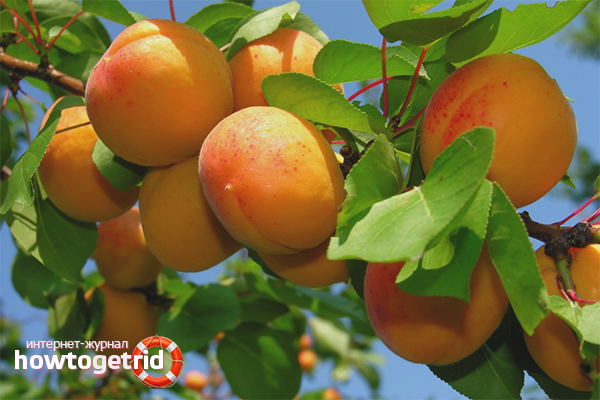
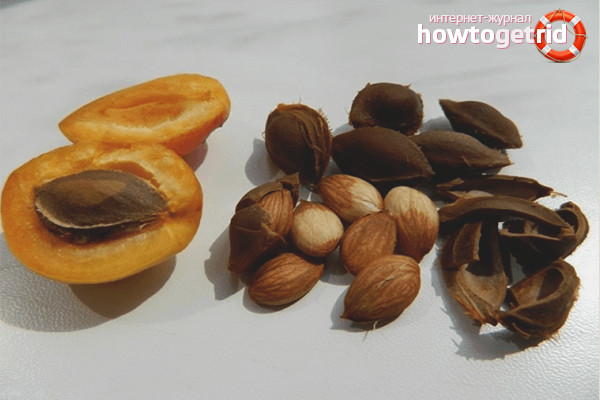

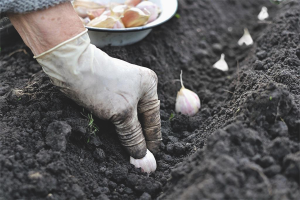
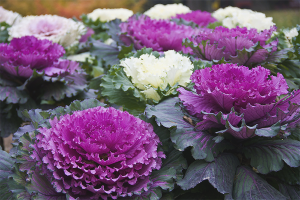

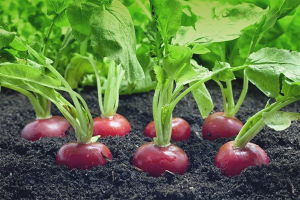
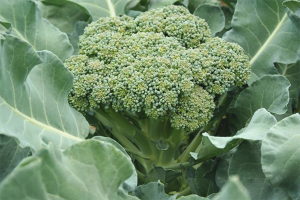
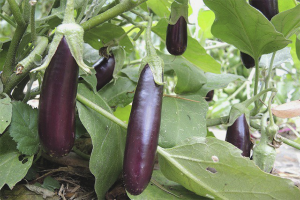

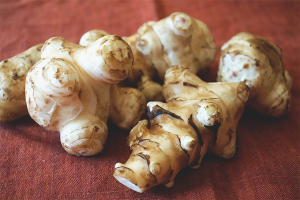
Submit